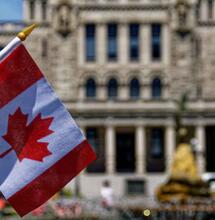Cannabis in the UK: Not a Buyer’s Market

It would appear that here in the UK, the cannabis market is now almost completely dominated by high potency weed. In 2005, 51% of herbal cannabis seized by the police was of “high potency”. By 2016, this had risen to 94%, meaning that almost every other – less potent - variant of cannabis has disappeared from the streets.
King’s College London has conducted a study of cannabis samples and found that the average strength was 14% THC. It should be noted, however, that strains have been reported with a THC content of 25% and higher. As any regular reader of this publication will know, the higher the THC content is, the lower the content of the other compounds such as CBD and CBG is going to be: there is only room for so much in a plant, after all.
While people may applaud this development purely in terms of getting utterly stoned, from a mental health aspect, it’s not a good thing. It is now fairly well established that flooding the brain with THC can (in some circumstances) lead to psychiatric difficulties, and therefore the stronger the cannabis, the higher chance there is of experiencing said difficulties. In most cases, these are transient, and can be solved by going to a quiet, safe space and lying down and letting the experience run its course. However, the figures indicate an increase in situations where these problems are longer lasting with rather more serious long-term repercussions and implications.
CBD seems to mediate the effects of too much THC, and CBG appears to play a role in controlling or counteracting feelings of paranoia that some people may experience (particularly novice users). Breed these compounds out of the plant, and all that is left is the THC, and for an increasing number of people, this is bad news indeed.
Many cannabis growers and vendors usually throw up their hands at this point, and claim that they are simply responding to what is currently in demand and that it is “a buyer’s market”. This claim is disingenuous because this implies choice, and as anyone who has ever bought cannabis in this country will know only too well, whatever is on offer at that particular time is what they will buy. Assuming that the police seizures reflect the illicit market across the board (and there’s not really any reason to doubt them), then almost all of what’s available is cannabis that is high in THC. While this is presumably good news for certain parts of the cannabis using community, it’s far from being the case for everyone.
Consider, for a second, the needs of medical users. These are often fairly specific in terms of THC versus CBD content, for example, and if the King’s College data are anything to go by, these needs are not currently being met by the majority of growers and vendors. An argument could even be made for the cannabis that’s generally available possibly making some of their health issues worse, particularly those falling within the domain of mental health.
How do we get out of this situation? Decriminalisation is a term continually bandied about, but while it’s good in theory, in practice there are too many grey areas and loopholes. Giving people a “right to grow” pass for a set number of plants for personal use is a possibility, as it would allow them to choose specific strains to suit their health needs. However, this doesn’t address the requirements of those for whom growing isn’t an option.
The most practical solution is regulation and legalisation, as this would theoretically encourage a proper “buyer’s market”, and allow everyone requiring a specific strain of cannabis access to medication.
It is taking a long time, but it is our hope that the UK government will ultimately “grasp the nettle” of cannabis legalisation.
http://www.independent.co.uk/news/uk/home-news/uk-cannabis-market-skunk-drug-strength-weed-spice-street-sales-dealers-a8231426.html
http://www.bbc.co.uk/news/health-43196566
https://www.medicaljane.com/2013/08/03/cannabigerol-cbg-is-a-minor-cannabinoid-with-major-impact/
S
Soft Secrets



